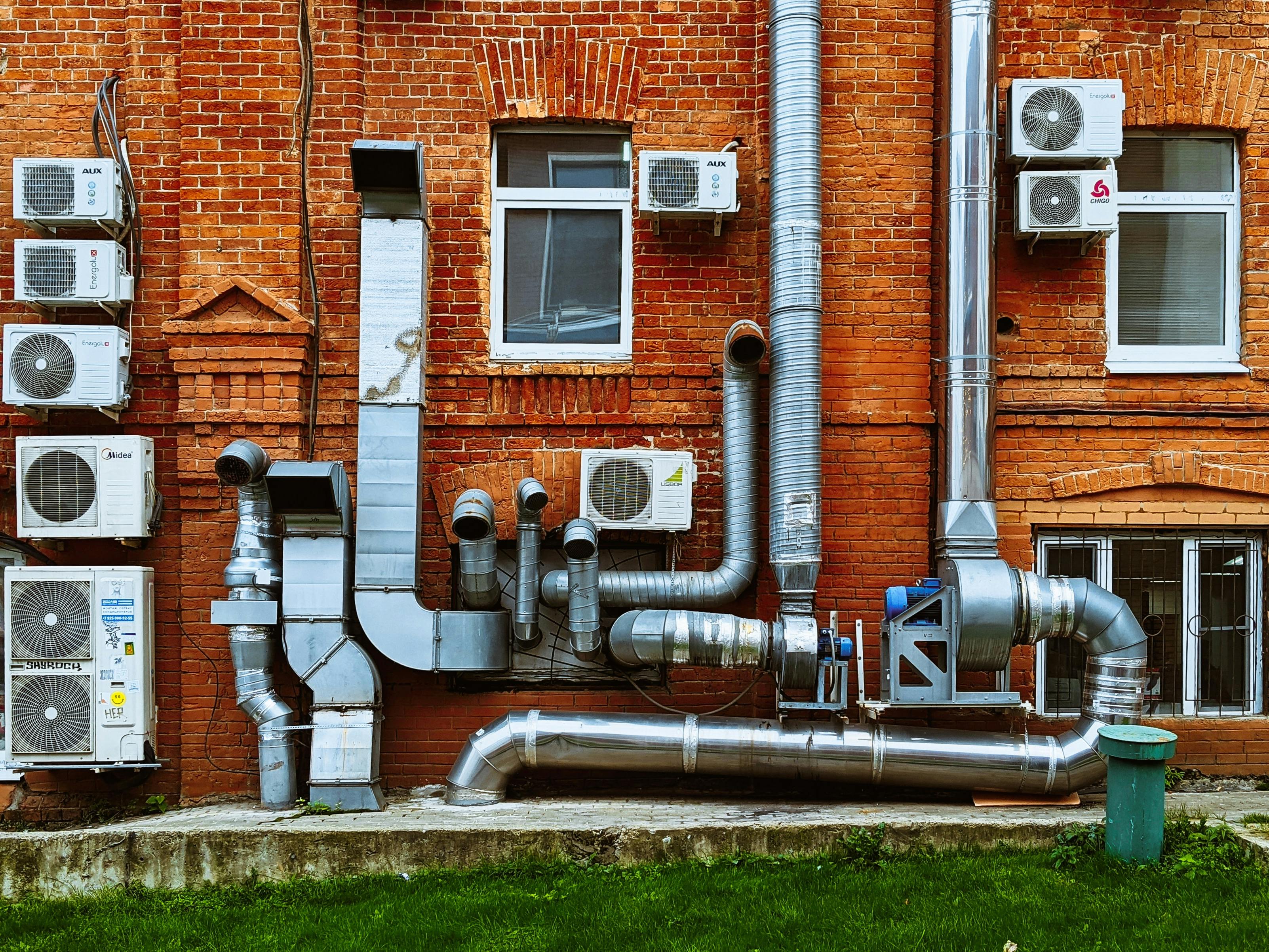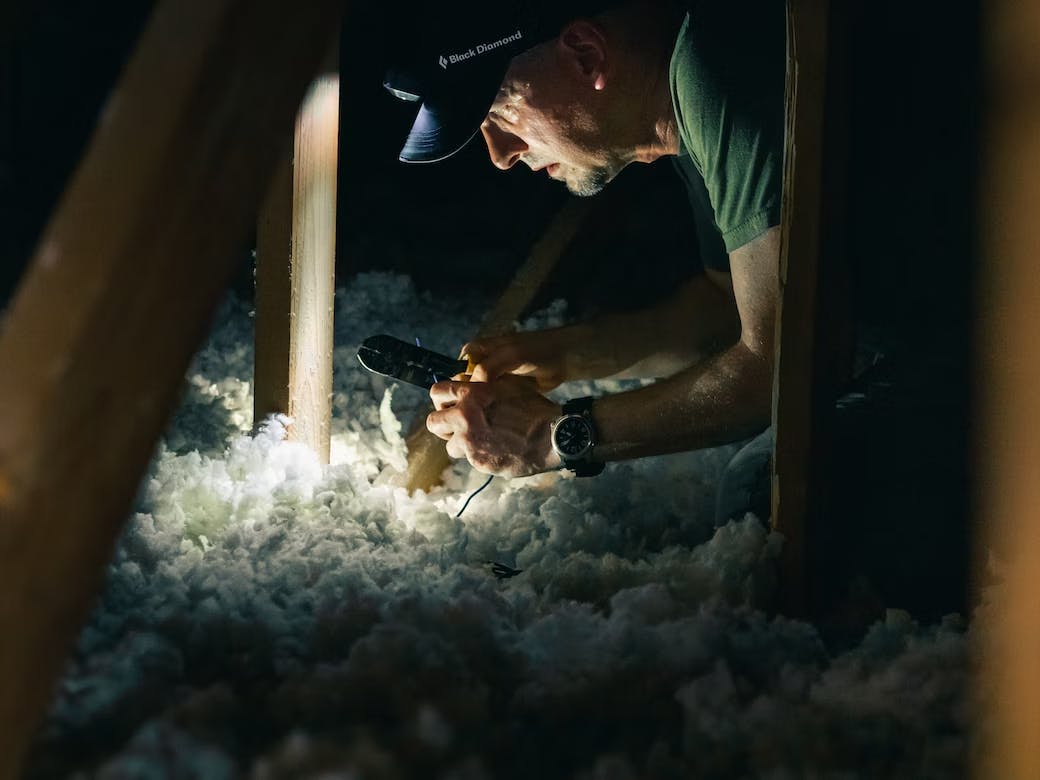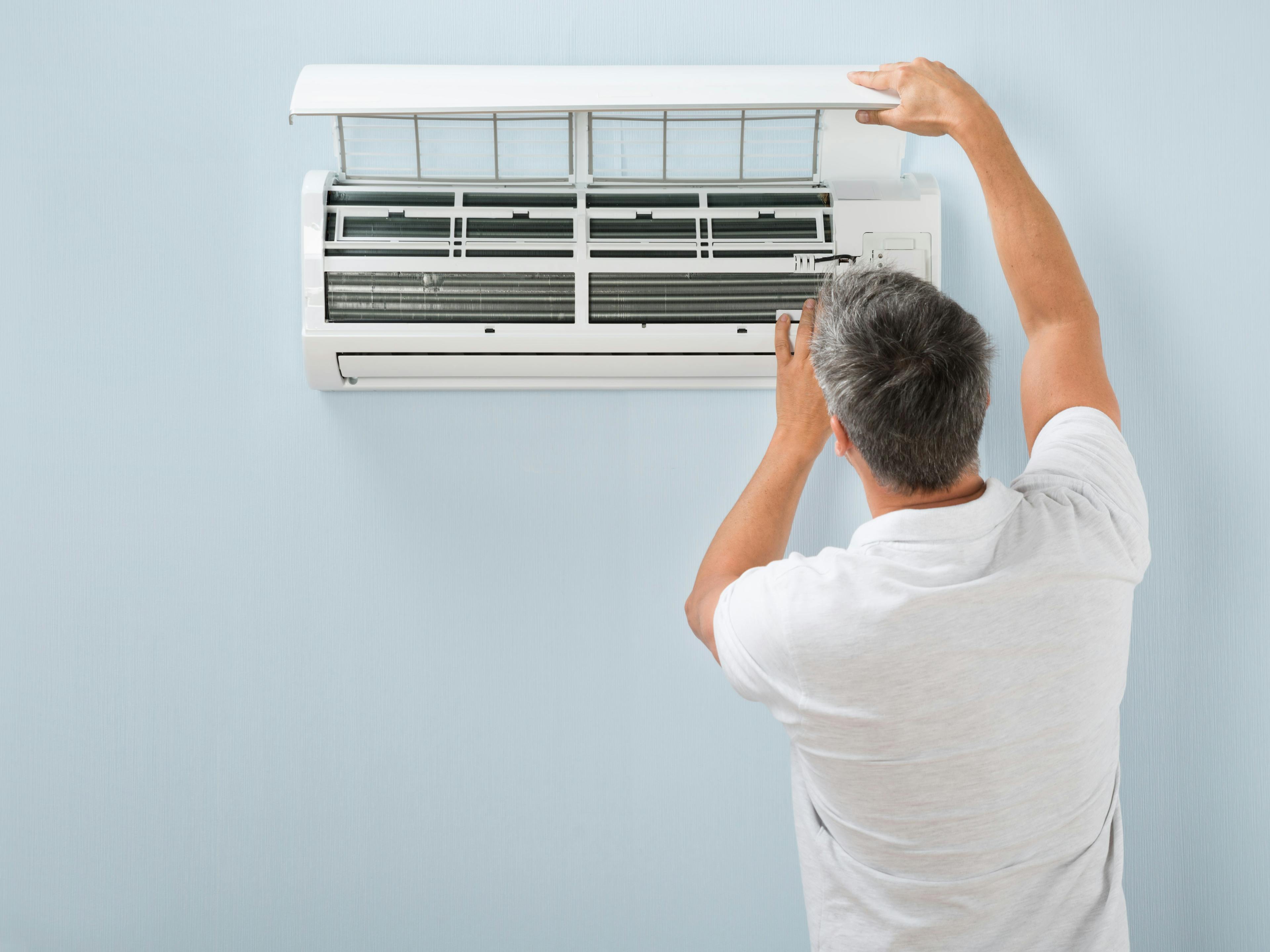Mastering HVAC Systems: A Comprehensive Guide

Welcome to our comprehensive guide on HVAC systems! Whether you're a homeowner, property manager, or simply interested in understanding how heating, ventilation, and air conditioning work, this article will provide you with the knowledge you need. We'll take an in-depth look at each component, exploring their functions, benefits, and how they collaborate to create a harmonious indoor environment. By the end of this guide, you'll be equipped with valuable insights to optimize your HVAC system for efficiency, comfort, and savings.
Table of Contents:
- The Importance of HVAC Systems
- Understanding Heating Systems
- Exploring Ventilation Systems
- Air Conditioning: Cooling Solutions for Comfort
- The Role of HVAC Controls
- Energy Efficiency and Cost Savings
- Maintenance and Troubleshooting Tips
- Choosing the Right HVAC System for Your Needs
- The Future of HVAC Systems
The Importance of HVAC Systems
A comfortable and healthy indoor environment is vital for our overall well-being and productivity. HVAC systems play a crucial role in achieving and maintaining optimal conditions. In this section, we'll delve into the significance of HVAC systems and their impact on temperature regulation, air quality, and ventilation.
Temperature Regulation:
Imagine enduring sweltering summer heat without the relief of air conditioning or shivering in the winter due to a lack of heating. HVAC systems ensure that indoor temperatures remain within a comfortable range regardless of the external weather conditions. They provide warmth during cold seasons and cooling during hot seasons, allowing us to stay comfortable and focused on our daily activities.
Air Quality:
Indoor air quality directly affects our health and well-being. HVAC systems contribute to maintaining clean and healthy indoor air by filtering out pollutants, allergens, and contaminants. Through air filters, HVAC systems trap dust, pet dander, pollen, mold spores, and other airborne particles, preventing them from circulating and causing respiratory issues or allergies. Additionally, HVAC systems can be equipped with advanced air purification technologies to further enhance air quality.
Ventilation:
Proper ventilation is crucial for fresh air circulation and preventing the buildup of stale air and moisture. HVAC systems facilitate the exchange of indoor and outdoor air, removing odors, excess humidity, and potentially harmful gases. By introducing a controlled amount of fresh outdoor air and exhausting stale indoor air, HVAC systems help maintain a balanced and healthy indoor environment.
Comfort and Productivity:
A well-regulated indoor environment directly impacts our comfort, mood, and productivity. When temperatures are too extreme or air quality is poor, it can lead to discomfort, fatigue, and difficulty concentrating. HVAC systems create a comfortable and consistent environment, allowing us to work, relax, and enjoy our living spaces to the fullest. By ensuring a pleasant indoor climate, HVAC systems contribute to improved productivity and overall well-being.
Understanding the importance of HVAC systems sets the stage for further exploration of their individual components. Heating, ventilation, and air conditioning work together harmoniously to create a comfortable, healthy, and productive indoor environment. In the following sections, we will delve deeper into each component, unraveling their principles and exploring how they collaborate to optimize HVAC system performance.
Understanding Heating Systems
When the temperatures drop, a reliable heating system becomes crucial for maintaining warmth and comfort indoors. In this section, we'll explore the various heating methods commonly used in HVAC systems. By understanding their operation, efficiency ratings, and key considerations, you'll be better equipped to choose the right heating system for your specific needs.

Furnaces:
Furnaces are the most common type of heating system, particularly in residential settings. They work by burning fuel, such as natural gas, propane, or oil, to generate heat. The heat is then distributed throughout the space using ductwork and vents. Furnaces are known for their efficiency and ability to quickly heat large areas. They come in different models, such as single-stage, two-stage, and modulating furnaces, offering varying levels of energy efficiency and precise temperature control.
Heat Pumps:
Heat pumps are versatile heating and cooling systems that extract heat from the outdoor air or ground and transfer it indoors. They work by reversing the refrigeration cycle, absorbing heat from the outside and releasing it inside during the heating mode. Heat pumps are highly efficient and can provide both heating and cooling functions. They are an excellent choice for moderate climates, as they perform optimally when temperature differentials are not extreme.
Radiant Heating Systems:
Radiant heating systems use heat transfer through objects, such as floors, walls, or ceilings, to warm the space. They can operate through various methods, including hydronic systems (heated water circulated through pipes), electric systems (electric coils embedded in floors), or even air-based systems. Radiant heating provides consistent and comfortable warmth without the need for ductwork. It offers precise temperature control and eliminates the circulation of allergens and dust associated with forced-air systems.
Efficiency Ratings:
When considering a heating system, it's important to pay attention to its efficiency ratings. The Annual Fuel Utilization Efficiency (AFUE) rating is used for furnaces, indicating the percentage of fuel that is converted into usable heat. The Heating Seasonal Performance Factor (HSPF) is used for heat pumps, representing the ratio of heat output to electricity consumption. Higher AFUE and HSPF ratings signify better energy efficiency, leading to lower operating costs and reduced environmental impact.
Factors to Consider:
When selecting a heating system, several factors should be taken into account. These include the size of the space to be heated, the climate in your area, available fuel sources, upfront and operating costs, maintenance requirements, and any specific heating needs or preferences you may have. Consulting with a professional HVAC technician can help you assess these factors and make an informed decision.
By understanding the different heating methods available and considering the relevant factors, you can choose a heating system that suits your specific requirements, maximizing comfort and energy efficiency. In the next section, we'll shift our focus to ventilation systems and their importance in maintaining a healthy indoor environment.
Exploring Ventilation Systems
Ventilation plays a crucial role in maintaining a healthy indoor environment by ensuring fresh air circulation and controlling indoor air quality. In this section, we'll delve into the importance of proper ventilation, the benefits it provides, and various ventilation strategies to consider.
Importance of Proper Ventilation:
Proper ventilation is essential for several reasons. Firstly, it helps remove indoor pollutants, such as volatile organic compounds (VOCs), odors, and airborne contaminants, which can have adverse effects on health and comfort. Secondly, ventilation controls moisture levels, preventing the growth of mold, mildew, and other harmful microorganisms. Lastly, effective ventilation helps to dilute and remove allergens and other particulate matter, improving indoor air quality.
Mechanical Ventilation Systems
Mechanical ventilation systems are designed to actively exchange indoor and outdoor air. These systems use fans to bring fresh air into the space and expel stale air. There are different types of mechanical ventilation systems, including:
- Exhaust Ventilation: Exhaust fans are installed in specific areas such as kitchens, bathrooms, and laundry rooms to remove pollutants directly from the source.
- Supply Ventilation: Supply ventilation systems introduce fresh outdoor air into the space, usually through dedicated vents or ducts. This helps maintain a balanced airflow and can be combined with exhaust ventilation for optimal results.
- Balanced Ventilation: Balanced ventilation systems use both supply and exhaust mechanisms to ensure a controlled exchange of air. They can be achieved through the use of heat recovery ventilators (HRVs) or energy recovery ventilators (ERVs). These systems recover heat or energy from the outgoing air to precondition the incoming fresh air, improving energy efficiency.
Natural Ventilation Methods:
Natural ventilation relies on natural air movement to provide fresh air exchange. This can be achieved through open windows, doors, or vents strategically placed to take advantage of natural wind patterns. Natural ventilation is a cost-effective option and can be particularly effective in mild climates or during temperate seasons. It promotes a connection with the outdoor environment and can provide a sense of freshness and natural airflow.
Building Design Considerations:
Effective ventilation requires careful consideration of building design and layout. Factors such as the number and placement of windows, the size and location of vents, and the overall airflow patterns should be taken into account. Proper sealing and insulation are important to prevent air leaks and ensure that ventilation occurs in a controlled and efficient manner.
It's important to note that ventilation needs vary depending on factors such as building occupancy, activities performed in the space, and local climate conditions. Consulting with an HVAC professional can help determine the most suitable ventilation system and strategies for your specific needs.
By implementing effective ventilation systems, you can ensure a constant supply of fresh air, control indoor pollutants, and create a healthier and more comfortable indoor environment. In the next section, we'll address common HVAC maintenance practices to keep your system running smoothly and efficiently.
Air Conditioning: Cooling Solutions for Comfort

Central Air Conditioning:
Central air conditioning systems are popular for cooling entire homes or commercial buildings. These systems consist of a central unit that cools the air and distributes it through a network of ducts and vents. Central AC provides consistent and even cooling throughout the space. It offers the advantage of centralized control, allowing you to adjust the temperature from a single thermostat. Central air conditioning systems can be highly energy-efficient when properly sized and maintained.
Ductless Mini-Split Systems:
Ductless mini-split systems provide cooling without the need for ductwork. They consist of an outdoor unit and one or more indoor units, known as air handlers, that are mounted on the wall or ceiling. Each air handler can be controlled independently, allowing for zoned cooling and personalized comfort. Ductless systems are energy-efficient since they avoid the energy losses associated with ductwork. They are ideal for retrofitting older homes or specific areas where duct installation is not feasible.
Window and Portable Air Conditioners:
Window air conditioners are self-contained units installed in a window or a dedicated wall opening. They cool a single room or a small area. Portable air conditioners are similar but can be moved from room to room. Both types of units require proper ventilation and access to a window for exhaust. Window and portable air conditioners are cost-effective options for cooling individual spaces but may have lower energy efficiency compared to central or ductless systems.
Energy Efficiency and SEER Rating:
When choosing an air conditioning system, energy efficiency is an important consideration. The Seasonal Energy Efficiency Ratio (SEER) rating is used to measure the cooling efficiency of air conditioners. Higher SEER ratings indicate greater energy efficiency and lower operating costs. Look for systems with higher SEER ratings to reduce energy consumption and environmental impact.
Factors to Consider:
Several factors should be taken into account when selecting an air conditioning system. Consider the size of the space to be cooled, the climate in your area, installation requirements, upfront and operating costs, noise levels, and any specific cooling preferences you may have. It's advisable to consult with an HVAC professional to determine the most suitable cooling solution for your unique needs.
The Role of HVAC Controls

While heating, ventilation, and air conditioning systems are the backbone of indoor comfort, HVAC controls serve as the brains behind the operation. In this section, we'll explore the essential role of HVAC controls in regulating temperature, airflow, and other settings to optimize comfort and energy efficiency.
Thermostat Options:
Thermostats are the primary interface between you and your HVAC system. Traditional thermostats allow you to manually adjust temperature settings. However, technological advancements have brought about a variety of thermostat options. Programmable thermostats allow you to set temperature schedules for different times of the day, helping you save energy by reducing heating or cooling when it's not needed. Smart thermostats take it a step further by offering remote control and learning capabilities, adapting to your preferences and optimizing energy usage.
Programmable Features:
Programmable HVAC controls offer the flexibility to create personalized temperature schedules based on your daily routines. For example, you can set the temperature lower during the night when you're asleep or raise it just before you wake up in the morning. This ensures comfort when you need it while conserving energy when the space is unoccupied. By programming your HVAC controls, you can achieve a balance between comfort and energy efficiency, reducing unnecessary heating or cooling when it's not required.
Smart Control Systems:
Smart control systems have revolutionized HVAC controls, offering unprecedented convenience and energy-saving benefits. These systems allow you to control your HVAC system remotely through mobile apps or voice commands. They can learn your patterns and preferences, automatically adjusting settings to optimize comfort and energy efficiency. Smart control systems also provide real-time energy usage data, allowing you to monitor and track your HVAC system's performance and identify opportunities for improvement.
Enhanced Comfort and Energy Efficiency:
By investing in advanced HVAC controls, you can enhance comfort and optimize energy efficiency. Precise temperature control ensures that your indoor environment remains consistently comfortable. The ability to adjust settings remotely means you can come home to a cozy space without wasting energy when you're away. Additionally, smart control systems can analyze data and make adjustments based on weather conditions, occupancy patterns, and other factors, maximizing energy savings while maintaining comfort.
It's worth noting that HVAC controls should be properly installed and calibrated for optimal performance. Consider consulting with an HVAC professional to ensure compatibility, proper setup, and integration with your existing system.
By harnessing the power of HVAC controls, you can take control of your indoor comfort and maximize energy efficiency. In the next section, we'll discuss the importance of regular maintenance and professional servicing to keep your HVAC system running smoothly.
Energy Efficiency and Cost Savings
In today's world, energy efficiency is a top priority for both environmental sustainability and cost savings. In this section, we'll explore various strategies and tips to enhance the energy efficiency of your HVAC system, leading to significant cost savings while reducing your environmental footprint.
Proper Insulation:
One of the key factors in maintaining energy efficiency is proper insulation. Well-insulated walls, ceilings, and floors minimize heat transfer, keeping the desired temperature inside your space. Inspect your insulation and ensure it is sufficient and in good condition. Consider adding insulation to areas that are prone to heat loss or gain, such as attics, basements, and crawl spaces. Proper insulation reduces the workload on your HVAC system, allowing it to operate more efficiently and effectively.
Regular Maintenance:
Regular HVAC system maintenance is essential for optimal performance and energy efficiency. Schedule professional maintenance visits at least once a year to clean and inspect your system. This includes checking and replacing air filters, cleaning coils, lubricating moving parts, and ensuring proper refrigerant levels. Regular maintenance not only extends the lifespan of your HVAC system but also ensures that it operates at peak efficiency, saving you energy and money in the long run.
System Upgrades:
Consider upgrading your HVAC system to more energy-efficient models. Newer systems often come with advanced features and technologies that significantly reduce energy consumption. Look for systems with high Seasonal Energy Efficiency Ratio (SEER) ratings for air conditioners and high Annual Fuel Utilization Efficiency (AFUE) ratings for furnaces. Upgrading to a programmable or smart thermostat can also improve energy efficiency by allowing you to set precise schedules and control your system remotely.
Zoning and Airflow Optimization:
Zoning your HVAC system allows you to divide your space into different zones and control the temperature independently in each area. This can be achieved through the use of dampers and multiple thermostats. By zoning your system, you can avoid wasting energy by heating or cooling unoccupied areas. Additionally, ensure proper airflow throughout your space by keeping vents and registers unobstructed. This allows for efficient distribution of conditioned air and avoids unnecessary strain on the system.
Energy-Saving Habits:
Simple changes in your daily habits can contribute to energy savings. Adjust your thermostat settings to a slightly higher temperature in summer and a slightly lower temperature in winter. Use natural ventilation whenever possible by opening windows and doors to allow fresh air circulation. Make use of natural light during the day and switch to energy-efficient lighting options. Unplug electronic devices when not in use to avoid standby power consumption. These small actions can add up to significant energy savings over time.
Maintenance and Troubleshooting Tips

Regular maintenance is essential to ensure the longevity and optimal performance of your HVAC system. In this section, we'll provide practical tips for DIY maintenance tasks and offer guidance on troubleshooting common issues. However, it's important to note that some tasks are best left to professionals. If you're unsure or encounter complex problems, it's advisable to seek professional assistance.
DIY Maintenance Tasks:
Filter Replacement: Regularly changing or cleaning your HVAC system's air filters is crucial. Clogged filters restrict airflow, reducing efficiency and potentially causing strain on the system. Check your manufacturer's recommendations for the appropriate filter type and replacement frequency.
Coil Cleaning: Over time, the evaporator and condenser coils can accumulate dirt and debris, hindering heat transfer. Use a soft brush or vacuum cleaner to remove debris from the coils. If they're heavily soiled, consider professional coil cleaning services.
Duct Inspection: Inspect your ductwork for leaks, loose connections, or signs of damage. Seal any leaks with appropriate duct tape or mastic sealant. Clean the ducts if they're visibly dirty or infested with mold or pests.
Condensate Drain Maintenance: Ensure the condensate drain line is clear and free from clogs. Clean the drain pan and check that the drain line is properly attached and draining away from your property.
Troubleshooting Common Issues:
Uneven Heating or Cooling: If certain areas of your space are not adequately heated or cooled, it could be due to improperly balanced airflow or issues with ductwork. Ensure all vents and registers are open and unobstructed. If the problem persists, consider consulting with an HVAC professional to assess and rebalance the system.
Noisy Operation: Unusual sounds, such as rattling, grinding, or banging, may indicate loose or damaged components. Check for loose screws or bolts and tighten them if necessary. If the noise persists, it's best to contact a professional technician to diagnose and address the issue.
System Not Turning On: If your HVAC system fails to turn on, check the circuit breaker or fuse box to ensure power is reaching the unit. If the power supply is fine, it could be a faulty thermostat or a more complex electrical issue. In such cases, it's recommended to contact a professional technician for troubleshooting and repairs.
Poor Airflow: Insufficient airflow could be caused by a dirty filter, clogged ducts, or a malfunctioning blower motor. Start by checking and replacing the air filter. If the problem persists, it's best to consult with an HVAC technician to identify and resolve the underlying cause.
Remember, while DIY maintenance can help keep your HVAC system in good condition, some tasks require specialized knowledge and equipment. Regular professional maintenance is crucial to ensure optimal performance and catch any potential issues early on.
By following these maintenance tips and promptly addressing any problems, you can maximize the efficiency, performance, and lifespan of your HVAC system. In the final section, we'll provide some additional resources and recommendations for further HVAC knowledge and support.
Choosing the Right HVAC System for Your Needs
Choosing the right HVAC system for your specific needs is a critical decision that requires careful consideration. In this section, we'll guide you through the decision-making process, taking into account factors such as building size, climate, budget, and energy efficiency goals. By exploring different system options and seeking expert advice, you can make an informed decision that meets your unique requirements.
- Assess Your Needs: Start by assessing your specific needs and requirements. Consider factors such as the size of the space to be heated and cooled, the number of occupants, and any specific comfort preferences. Assessing your needs will help you determine the capacity and performance requirements of the HVAC system.
- Determine the Climate Considerations: The climate in your region plays a significant role in choosing the right HVAC system. Areas with extreme temperatures or high humidity levels may require more robust systems or additional components, such as dehumidifiers. Consult with local HVAC professionals who understand the climate challenges in your area and can recommend suitable system options.
- Set a Realistic Budget: Establishing a budget is an important step in the decision-making process. HVAC systems come in a range of prices, and it's essential to set a realistic budget that aligns with your financial capabilities. Consider both the upfront costs and the long-term operational costs when evaluating different system options. While it may be tempting to opt for the cheapest system, it's crucial to consider the system's energy efficiency and potential long-term savings.
- Consider Energy Efficiency: Energy efficiency is not only environmentally responsible but also contributes to long-term cost savings. Look for HVAC systems with high energy efficiency ratings, such as high SEER (Seasonal Energy Efficiency Ratio) for air conditioners and high AFUE (Annual Fuel Utilization Efficiency) for furnaces. Energy-efficient systems may qualify for rebates or incentives from local utility companies or government programs, further reducing your costs.
- Explore Different System Options: There are various HVAC system options available, including central air conditioning, heat pumps, ductless mini-split systems, and hybrid systems. Each option has its advantages and considerations, depending on factors such as space requirements, existing ductwork, and personal preferences. Research and compare the pros and cons of each system type to determine which one best suits your needs.
- Seek Expert Advice: Consulting with HVAC professionals is highly recommended when choosing the right system. They can perform a thorough assessment of your space, consider your specific requirements, and provide expert recommendations. HVAC professionals can also assist in proper sizing, installation, and ongoing maintenance of the system, ensuring optimal performance and efficiency.
The Future of HVAC Systems
The HVAC industry is continually advancing, driven by the need for more efficient and sustainable solutions. In this final section, we'll explore the exciting future of HVAC systems and highlight emerging trends and technologies that are shaping the industry. By staying informed about these developments, you can make informed decisions and embrace the future of HVAC technology.
Geothermal Heating and Cooling:
Geothermal systems harness the Earth's natural heat to provide efficient heating and cooling. By utilizing underground heat exchange, these systems can achieve impressive energy savings and reduce greenhouse gas emissions. Geothermal systems are becoming increasingly popular as they offer long-term cost savings and environmental benefits.
Solar-Powered HVAC:
Solar energy is a clean and renewable resource that can be harnessed to power HVAC systems. Solar-powered HVAC solutions utilize photovoltaic panels to generate electricity, reducing reliance on the grid and lowering energy costs. This sustainable approach to HVAC is gaining traction as solar technology becomes more accessible and affordable.
Smart Home Integration:
The integration of smart home technology has revolutionized the HVAC industry. Smart thermostats and connected HVAC systems allow homeowners to control their heating and cooling remotely, optimize energy usage, and create personalized comfort settings. These systems can learn from user preferences, adjust settings automatically, and provide energy usage insights, resulting in enhanced comfort and energy efficiency.
Energy Recovery Ventilation (ERV):
Energy Recovery Ventilation (ERV) systems improve indoor air quality by exchanging stale indoor air with fresh outdoor air while minimizing energy loss. These systems recover heat or coolness from the outgoing air and transfer it to the incoming air, reducing the energy required to condition the air. ERV systems are gaining popularity as they improve ventilation without sacrificing energy efficiency.
Advanced Air Filtration and Purification:
Enhanced air filtration and purification technologies are becoming increasingly important for maintaining healthy indoor environments. HVAC systems now incorporate advanced filters and purification systems to remove allergens, pollutants, and even harmful pathogens from the air. These technologies contribute to improved indoor air quality and are particularly beneficial for individuals with respiratory conditions or allergies.
Intelligent Building Management Systems:
Intelligent Building Management Systems (BMS) integrate HVAC systems with other building systems, such as lighting and security, to optimize overall energy efficiency and occupant comfort. BMS platforms use real-time data, analytics, and advanced control algorithms to automate and optimize HVAC operations, resulting in energy savings and improved system performance.
As the HVAC industry continues to evolve, these trends and technologies will shape the future of heating, ventilation, and air conditioning. By embracing these innovations, you can create more sustainable, efficient, and comfortable indoor environments while reducing your environmental impact.
In Conclusion:
Understanding the future of HVAC systems is crucial for staying ahead of industry trends and making informed decisions. Geothermal heating and cooling, solar-powered solutions, smart home integration, energy recovery ventilation, advanced air filtration, and intelligent building management systems are just a few examples of the exciting developments shaping the HVAC landscape.
By embracing these advancements, you can create a more sustainable and efficient HVAC system that enhances indoor comfort, improves indoor air quality, and reduces energy consumption. Stay informed, consult with HVAC professionals, and explore the possibilities to ensure your HVAC system aligns with the future of the industry.
We hope this comprehensive guide has provided valuable insights into the basics of HVAC systems and offered a glimpse into the future of the industry. For further information or assistance, feel free to reach out to our team of HVAC experts.


